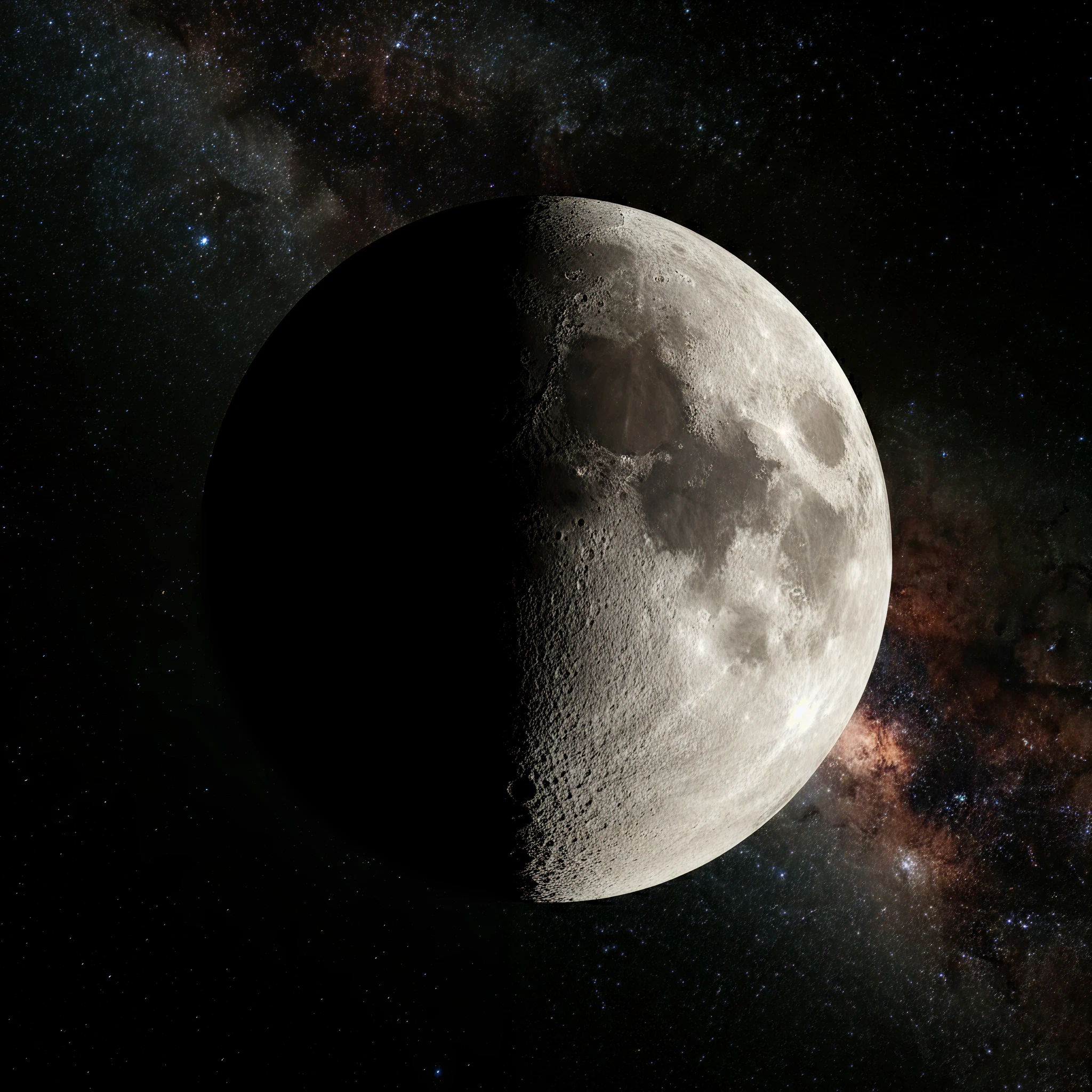The Moon, Earth’s celestial companion, is an enigma full of contrasts. One of its most fascinating aspects is the stark difference between its two sides. The side perpetually facing Earth, called the near side, appears smoother and more familiar, while the far side, hidden from our view, is rugged and heavily cratered. This dichotomy has puzzled scientists for years, leading them to uncover intriguing insights into the Moon’s formation and the forces that shaped its surface.
The Near Side At a Glance
The Moon’s near side is unlike any other terrain in the Solar System. It’s characterized by vast, dark plains known as maria, which were formed by ancient volcanic activity. These plains are made up of solidified lava flows that cover roughly 31% of the near side. These relatively smooth regions are scattered among lighter, heavily cratered highlands.
The near side is also geologically unique because of its thinner crust. This thinner crust allowed magma beneath the surface to erupt more easily in the Moon’s early history, forming the maria we see today. This side also contains an abundance of heat-generating elements like thorium and uranium, which contributed to its volcanic activity billions of years ago.
Key Features of the Near Side
- Thinner crust making magma eruptions more common.
- Dominance of maria (dark volcanic plains).
- Higher levels of heat-producing elements leading to geological activity.
The Far Side Unveiled
The far side of the Moon is a world of stark contrast. It lacks the extensive maria that define the near side, as its crust is much thicker. This thicker crust likely prevented the molten lava beneath the Moon’s surface from breaking through to create maria. Instead, the far side is covered in highlands and is heavily pockmarked with impact craters, giving it a rugged and aged appearance.
Scientists believe this side’s crustal thickness is a result of asymmetries during the Moon’s formation. With minimal geological activity, it retains its ancient craters, serving as a cosmic time capsule of the Earth-Moon system.
Key Features of the Far Side
- Thicker crust, preventing extensive volcanic activity.
- Minimal maria, mostly heavily cratered highlands.
- A more rugged and ancient appearance compared to the near side.
The Collision Theory
How did these dramatic differences between the near and far sides arise? One leading theory points to a giant impact during the early days of the Moon’s formation. According to this model, a smaller celestial body may have collided with the young Moon, redistributing heat-producing elements to the near side. This redistribution made the near side warmer, thinner, and more prone to volcanic activity, while leaving the far side colder and geologically inactive.
Additionally, gravity data from NASA’s GRAIL (Gravity Recovery and Interior Laboratory) mission indicates that the interior of the Moon is asymmetrical. The near side’s mantle appears to be slightly warmer with more radioactive elements, further supporting the collision theory.
Summary of the Differences
| Feature | Near Side | Far Side |
|---|---|---|
| Crust Thickness | Thin | Thick |
| Maria Coverage | Extensive | Minimal |
| Surface Features | Smooth plains interspersed with craters | Heavily cratered with rugged highlands |
| Geological Activity | Higher due to heat-producing elements | Minimal |
The Moon as a Cosmic Archive
The Moon’s contrasting sides offer a glimpse into the forces that shaped not only its surface but also its past interactions with Earth and the rest of the Solar System. The study of these differences isn’t merely an academic exercise; it adds to our understanding of planetary formation and evolution.
If lunar exploration excites you as much as it excites us, keep following for more celestial insights. From scientific discoveries to the future of space exploration, we’ll keep striving to bring the wonders of the cosmos closer to Earth.








